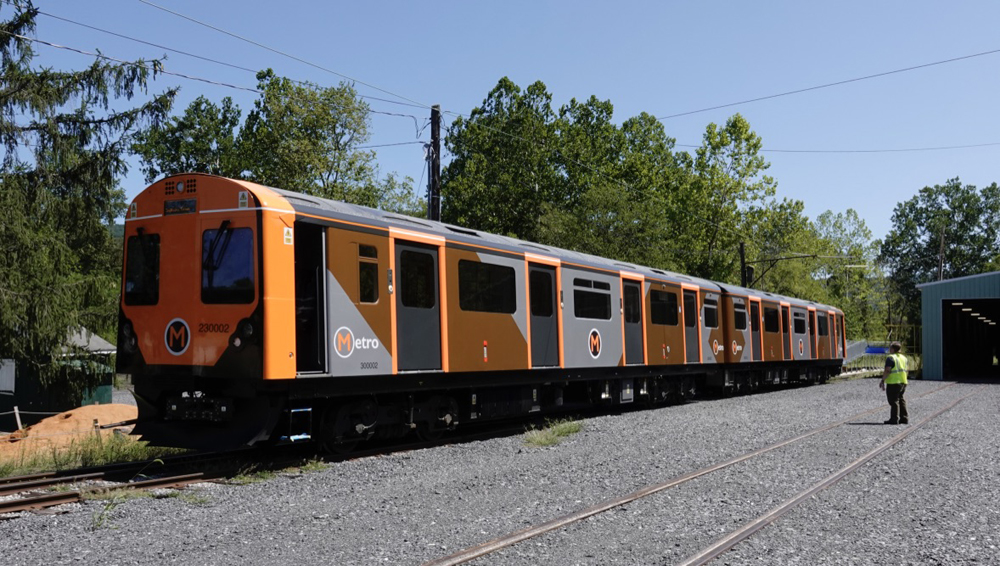
IOWA CITY, Iowa — Officials in Johnson County, Iowa, will consider the Pop Up Metro rail transit system for a proposed service between North Liberty and Iowa City, the Cedar Rapids Gazette reports.
A group of elected and other officials will make a trip in August to Rockhill Furnace, Pa., where Pop Up Metro has set up a demonstration program on the route of the Rockhill Trolley Museum, to view the battery-powered commuter rail system. The visit will come ahead of the completion of a feasibility study for a Bus Rapid Transit system between the two communities that is expected to be completed in September.
The commuter rail proposal would use an 8.2-mile segment of the Cedar Rapids & Iowa City Railway, or CRANDIC, the 94-mile short line in the eastern part of the state. It would operate as a three-year pilot program, under which Pop Up Metro would lease the trains and related equipment to local interests as a live trial before investing in a permanent system
“We would be able to see some trends over time and if it worked for our region, we could think about more permanent solutions … or we could decide that the demand isn’t there and shift our priorities,” Mackenzie DeRoo, senior director of advocacy for Greater Iowa City Inc., said at a July 15 meeting of the Joint Entities, which includes representatives of the Johnson County Board of Supervisors, 11 communities, two school boards, and the University of Iowa.
The live-trial format is a basic tenet of the Pop Up Metro program, backed by Rail Development Corp. and its co-founder Henry Posner [see “Pop-Up Metro aims to provide affordable passenger operation,” Trains News Wire, Oct. 1, 2021]. The program aims to lease everything needed to start operations — the trainsets, which are remanufactured British multiple-unit cars; battery charging equipment; station platforms; training and maintenance; and other related equipment — at a low enough cost to convince organizations to try the system. While several entities have shown interest over the last several years, no one has yet put the Pop Up Metro system in service.






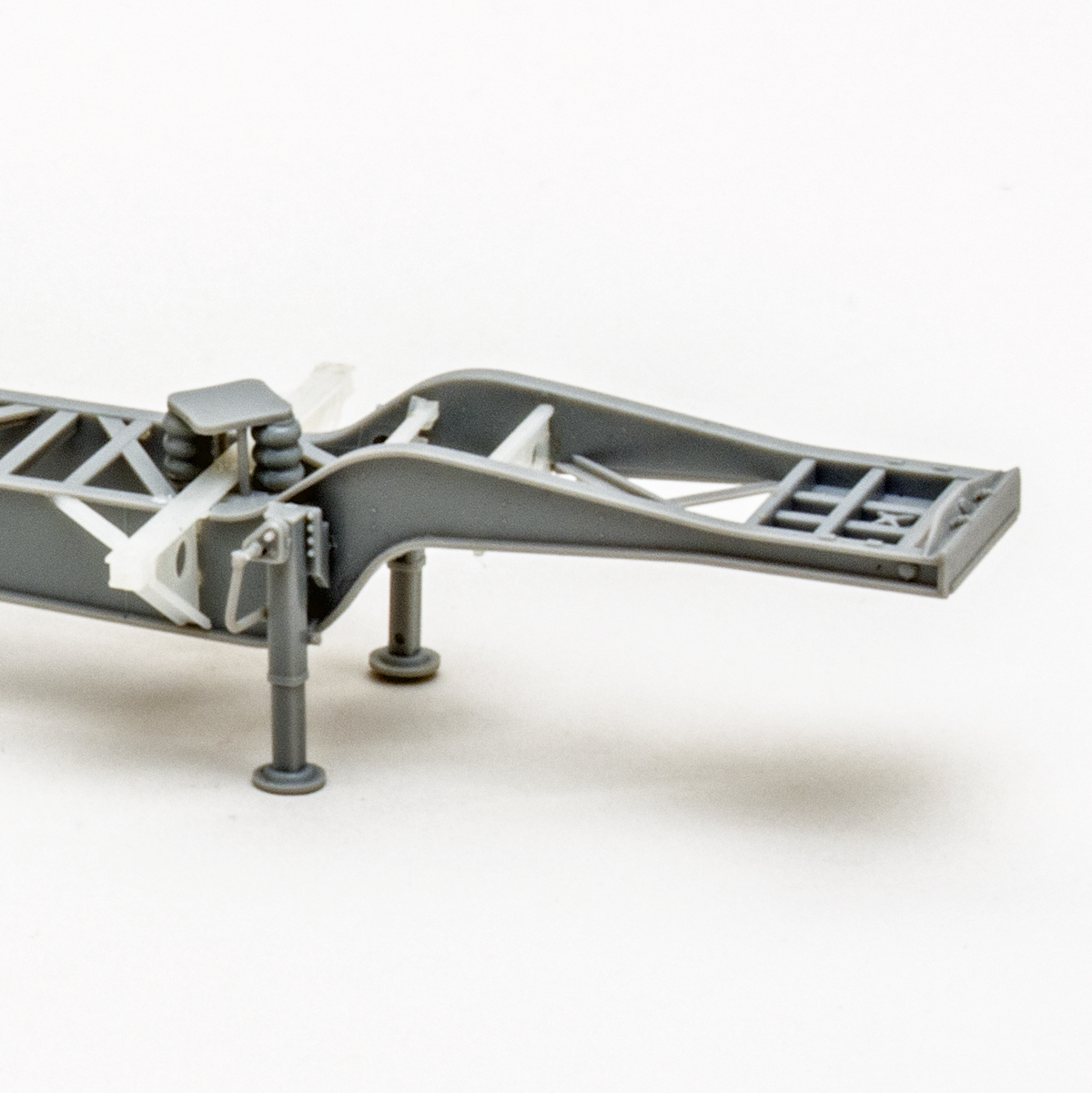
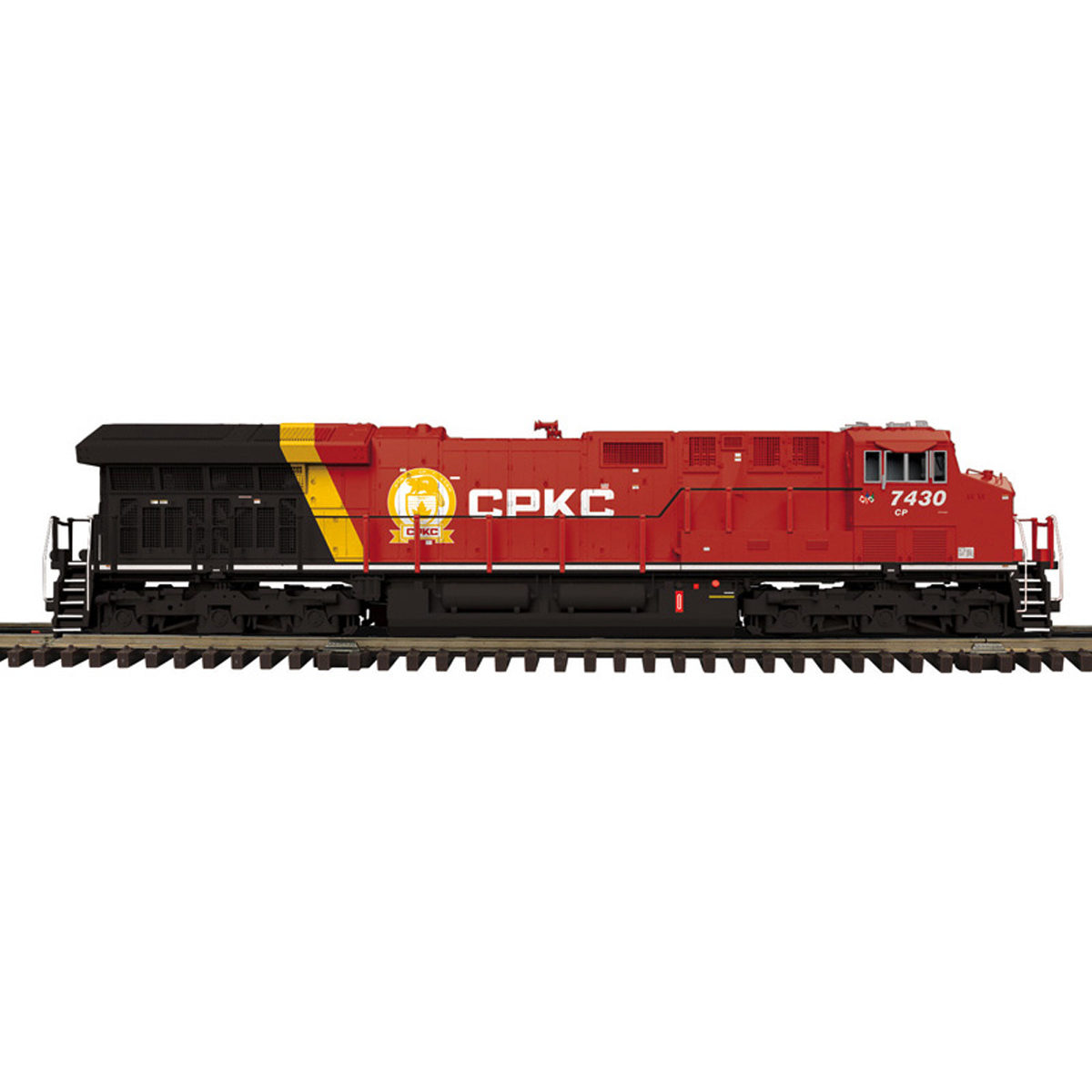
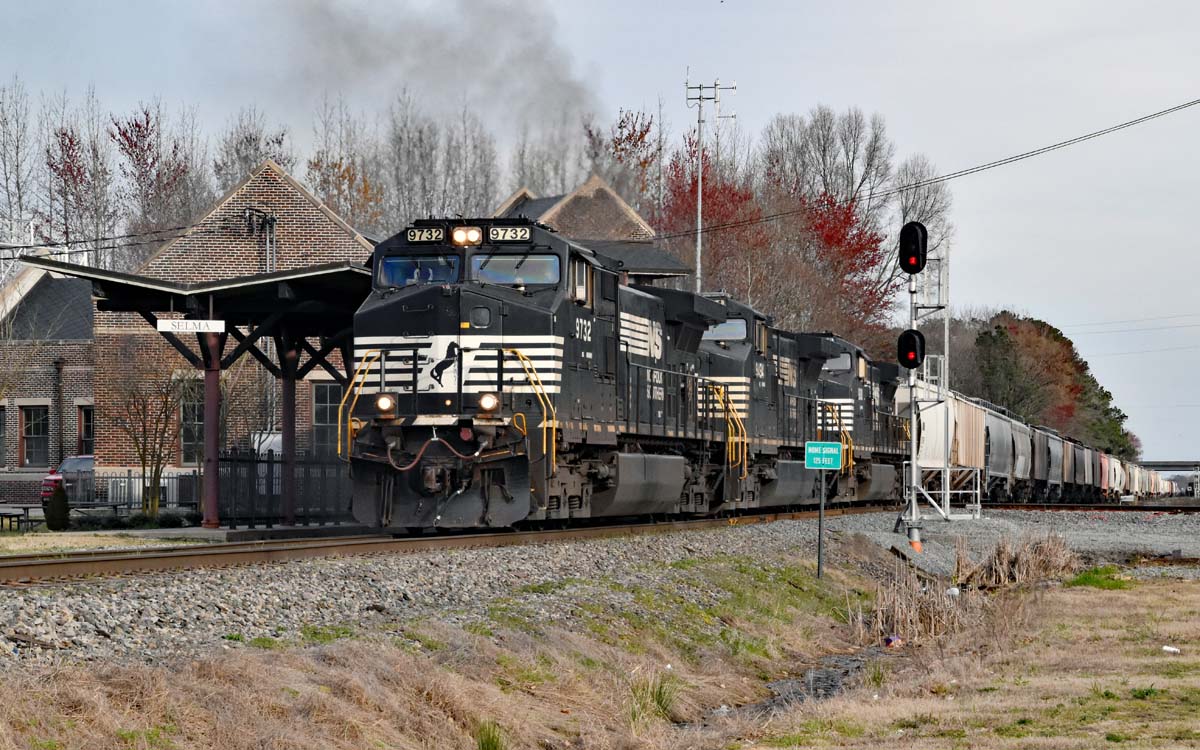
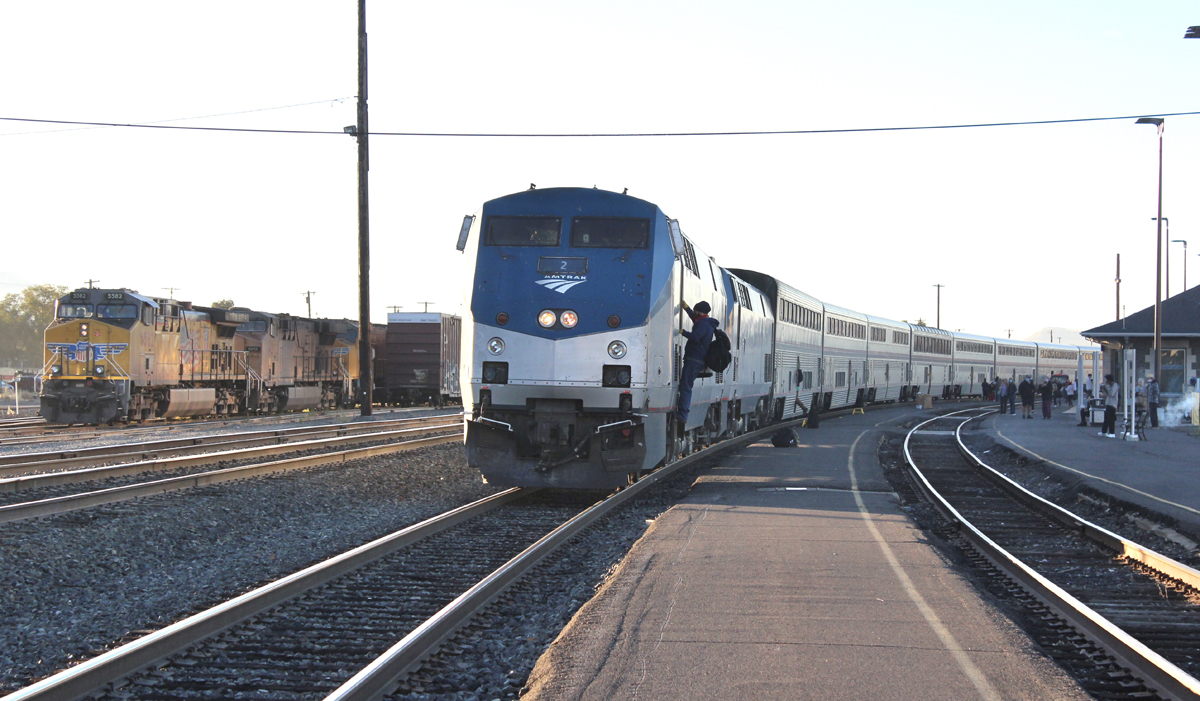




Iowa’s train to nowhere.
Those cars appear like 3rd rail equipment, and with many doors and fewer seats. Hope they have lots of hanger straps. They must look out of place going by an Iowa corn field. Anyway, that’s my narrow minded observation. 🙂
Milwaukee’s “Hop” goes nowhere to nowhere, but is a free ride paid by gambling dough revenue. It may be the nucleus of a larger system replicating some of the former city streetcar lines. This writer is old enuf to remember the Wells St. line running east/west. Today’s Hopride is pleasant; let’s hope the RNC attendees take advantage of it with a brat in hand.
Milwaukee spent $5 million in 2023 to run The Hop.
The casino deal was $10m for __12 years__.
It’s paid for by the taxpayers, not some casino.
Taking a quick look at the area on Google Earth, there appears to be very little local freight traffic on the Iowa City-North Liberty segment, just a couple industries in North Liberty. If any through-freight traffic can be shifted to night times when the Pop-up Metro wouldn’t run, then operationally, this proposal could work with temporal separation. I won’t speak to actual passenger traffic levels.
An extension to Cedar Rapids would also make sense to connect to a larger population center, but there is far more freight traffic on that end of the line. Heavier passenger equipment that can mix with freight trains would be required.
The CRANDIC line used to be an interurban and would be a good route for transit if it operated all the way to Cedar Rapids. It passes near the airport too, so some sort of airport connection would be helpful. One concern would be the local freight traffic on the South side of Cedar Rapids. Perhaps some new line would need to be built into Cedar Rapids. Maybe it could directly serve the airport terminal too.
Regarding the cost, I-380 is VERY busy between Iowa City and Cedar Rapids, yet the cities keep growing. Traffic will keep growing too. They either need to invest in transit or invest in additional lanes on I-380. Neither will be inexpensive.
Well, I hope somebody’s interested in trying it. But Metro…Johnson County, Iowa? I’d consider that a fairly unpromising test lab for a ride-share van experiment.
It won’t fail, guaranteed.
Bus Rapid Transit (BRT) is out of the question as rail transit is more favourable. The CRANDIC crosses the Iowa River on a northwest tangent as it bisects the campus of my Alma Mater, the University of Iowa enroute to Cedar Rapids from Iowa City. Pop Up Metro might garner greater success operating 16 miles to Cedar Rapids beyond the 8 miles to North Liberty. Iowa City and Cedar Rapids would serve as bedroom communities to each other with the proposed service. North Liberty would be an intermediate station.
I lived in Iowa City many years ago while in graduate school there and don’t recall exactly, but if memory serves, the CRANDIC line mentioned here was part of their route from Iowa City to Cedar Rapids (?).
Per Mr. Landey’s points above, I don’t think the rolling stock/technology is the issue here. Even though this ‘Pop-Up Metro’ demonstration project (supposedly) leases all of the necessary equipment and stations (?) to start (and demonstrate) this service, I cannot help but wonder what the total capital costs would be for such a service, even if it is a “demonstration” service (and is offered under lease). Wouldn’t a Bus-Rapid-Transit (BRT) service be a more cost-effective investment to demonstrate transit service on this corridor? Unless this “Pop-Up Metro” demonstration project is offering this really “on-the-cheap” to lure possible operators?
Two other thoughts/questions: 1) Does the CRANDIC still operate freight service on the Iowa City-to-North Liberty corridor? I don’t know the answer to this question, but if so, the FRA “Crashworthiness” design requirements would apply to this “Pop-up Metro” passenger equipment? Or there would need to be temporal separation of passenger and freight rail operations (might not be an issue if this is a lightly-used, or non-existent freight rail corridor?);
AND – 2) Again, I don’t know for sure, having been gone from Iowa for many years, but recall that N. Liberty wasn’t a very large, populous community, thus is this really a viable corridor for higher (?) density commuter rail service? OR, is the idea to have this service provide commute options for folks up in Cedar Rapids? If so, then a number of questions about the “intermodal” connections between CR and North Liberty, plus infrastructure to support this type of commute markets/patterns (station/park& Ride lots at N. Liberty, bus/vanpool connections to CR, etc.).
To answer #1 this equipment does not meet 49CFR238 tier 1 crash requirements. Not a show stopper. Some manner of physical separation during times of operation will allow this to happen.
”
is this really a viable corridor for higher (?) density commuter rail service?
”
You’re being too polite. We all know it’s not. But they’re not spending their own money on this foolish “test”. They don’t care.
As David P. Morgan wrote zillions of years ago, the problems with passenger rail in America don’t stem from the rolling stock. Nor will rolling stock innovation solve the problems.
Milwaukee’s trolleys are very nice. Doesn’t change the inconvenient fact that the system is an economic black hole of questionable worth to its few passengers. My hunch is that Iowa City won’t have any better luck.
Nice. Restringing the trolley wire would be nicer.